Some of the recent work by members of the SNR group at CfA has concentrated on studies of SNRs which display centrally-bright x-ray emission. The summary below includes contributions from P. Slane, O. Vancura, J. P. Hughes, I. M. Harrus, T. Gaetz, and P. Plucinsky.
Introduction
The evolutionary cycle of SNRs is typically described in three relatively distinct phases. The standard picture begins with a supernova (SN) explosion releasing some 10^50-51 ergs of energy into the surrounding interstellar medium (ISM) in the form of a rapidly expanding blast wave accompanied by slower moving ejecta. In this earliest free-expansion phase, the initial explosion energy is imparted in the form of kinetic energy to the ejected material. As this supernova remnant (SNR) evolves, the blast wave sweeps up ISM material forming a shell of ~10^8 K gas surrounding a tenuous, hotter interior; a reverse shock propagates into the slower-moving ejecta. The result is a shell of radio emission associated with magnetic field compression and particle acceleration behind the primary shock, accompanied by enhanced X-ray emission associated with the hot swept-up and ejecta components.
When the mass of the swept-up matter approaches that of the ejecta, the SNR enters an adiabatic expansion phase during which the energetics are dominated by the kinetic energy imparted to the swept-up ISM. During this phase the SNR properties are described by the well-known Sedov solutions (Sedov 1959; see Section II). Once the shock velocity falls below about 300 km/s, the energy loss becomes dominated by radiative channels which results in a reduced expansion rate as the main front progresses under its own momentum.
Complications associated with non-uniformities in the surrounding medium (e.g. pre-existing circumstellar cavity, or nearby molecular clouds) as well as instabilities at the shock front can play important roles in producing modifications to the expected morphological characteristics. However, X-ray observations of SNRs have provided stunning confirmation of the standard picture described above, including detailed images of instability-driven clumping, temperature measurements consistent with the expected development, and spectral evidence for ejecta with non-solar abundances consistent with models for nucleosynthesis in SN explosions.
In Figure 1 we present X-ray and radio images of the prototypical middle-aged SNR, the Cygnus Loop. A distinct limb-brightening can be seen in both the X-ray and radio.
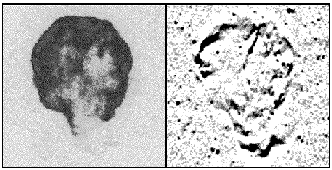
Figure 1: Cygnus Loop in X-rays (left) and radio (right). This ~10,000
year old remnant shows clear limb-brightened morphology as expected from the
standard Sedov scenario.
However, there also exists a class of middle-aged SNRs for which the X-ray morphological characteristics appear to be completely opposite of that suggested by this picture. While the radio emission for these remnants clearly delineates the shell, the X-ray emission is concentrated in the central regions (Figure 2) with little or no evidence of the shell itself.
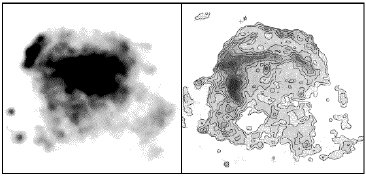
Figure 2: W28 in X-rays (left) and radio (right). While radio emission
is concentrated in the outer shell region, X-ray emission is centrally peaked
in complete conflict with a standard Sedov profile.
A center-filled morphology in X-rays is quite familiar for such remnants as the Crab or 3C58, however these SNRs are known to be powered by central pulsars; the X-ray emission is due to a synchrotron nebula created by energetic electrons accelerated in the pulsar magnetosphere (although the pulsar in 3C58 had never been directly detected). For at least some of the center-filled remnants, however, the X-ray emission is decidedly thermal in origin (Figure 3).
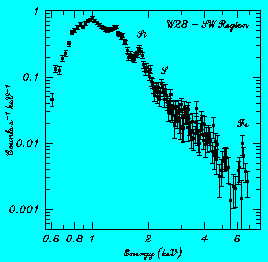
Figure 3: ASCA SIS spectrum of W28. Clear line
emission confirms the thermal nature of the emission.
A number of scenarios have been suggested to explain the puzzling characteristics of some or all of these center-filled SNRs:
Absorption: The remnants are old Sedov-type SNRs at large N_H. Thus, the shell is cool and heavily absorbed while emission from the hot interior is able to reach the observer.
Central Engine: Nonthermal emission driven by a central pulsar enhances central emission.
Radiative Phase: The remnant has entered the radiative phase and the shell has cooled below X-ray emitting temperatures, thus allowing only the central regions to be observable.
Cloudy ISM: Cool clouds left relatively undisturbed by the primary shock slowly evaporate in the hot SNR interior, thus adding to the central emission measure ( White & Long 1991).
Each of these scenarios, which we discuss in more detail below, produces distinct observable features which can be identified through joint spectral/spatial studies of the X-ray and infrared emission.
As we describe in detail below, our group has made considerable progress on this subject through recent ROSAT and ASCA observations of several center-filled SNRs (Seward, Schmidt, & Slane 1995; Slane, Vancura, & Hughes 1996 ; Harrus et al. 1996a; Harrus, Hughes, & Helfand 1996b, Slane et al. 1996). (Some of the references are in preparation; we summarize the results here.) We have developed code for the effects of nonequilibrium ionization ( Hughes & Helfand 1985) and dust grain depletion ( Vancura et al. 1994) on the emissivity of hot plasmas, such as those characteristic of SNRs. These are now being integrated into models incorporating the standard Sedov solutions for SNR evolution as well as those for evolution in a cloudy ISM. We have also developed code for simulating 1-D and 2-D flows. The code is based on the robust high-resolution PPM (piecewise parabolic method) algorithms of Colella and Woodward (1984).
Center-Filled SNRs
The Problem
The standard picture for SNR evolution leads to shell-type morphology whose density and temperature characteristics are described by the Sedov solutions. The expansion relation can be written

where R_s is the shock radius, E_51 is the SN explosion energy in units of 10^51 ergs, n_0 is the number density of the preshock ISM, and t is the SNR age in years. The shock temperature is given by

For strong shock conditions and ideal gas behavior, the preshock-to-postshock density ratio is n/n_0 = 4 and the spherical shell width is Delta_R = R_s/12. The emitted X-ray flux is given by

where d is the remnant distance and Lambda_x is the emissivity of the X-ray emitting gas. The latter quantity depends on the temperature, abundances, and ionization state of the gas. For a Sedov remnant the emission-measure weighted temperature is slightly higher (~25%) than kT_s.
For the shell-type geometry, then, temperature and flux values determined from spectral analysis provide a measure of kT_s which, if the distance is known, can be combined with the observed radius and derived n_0 value to determine the age, explosion energy, and amount of swept-up gas. Uncertainty in the distance estimates, which are typically based upon HI absorption measurements, lead to corresponding uncertainties in the above derived quantities. However, for at least some remnants the distance uncertainties are small enough for the model predictions to provide relatively accurate estimates.
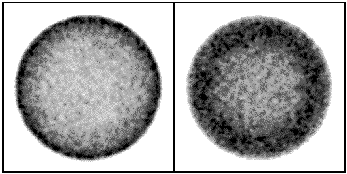
Figure 4: Simulated X-ray images of Sedov remnants viewed through no
absorption (left) and through N_H = 2 X 10^22 cm-2 (right).
Note the sharp limb-brightened morphology of the unabsorbed image, and the
interior enhancement and broader peak emission in the absorbed case.
In Figure 4 (left) we present a simulated X-ray image (0.1-2.4 keV) of a typical middle-aged SNR in the Sedov phase of evolution (E_51 = 0.3, n_0 = 0.25 cm^-3, t = 2 X 10^{4} yr, d = 1 kpc). The limb-brightened morphology is clear, although here we have neglected the effects of absorption. For comparison, we also present a simulated image (Figure 4, right) of the same remnant viewed through N_H = 2 X 10^{22} cm^-2. Because the shock temperature is only 0.13 keV, the larger column density is sufficient to absorb much emission from the shell, leaving a morphology with a smaller brightness contrast between edge and center, and broader limb emission.
Long et al. (1991) considered the effects of absorption on apparent morphology for W28 (Figure 2) and concluded that such effects could not lead to the observed centrally peaked emission. The simulation above illustrates this as well, although we have not considered the effects of grain depletion which tend to increase the emissivity of the central gas (though an approximate treatment suggests that this effect is small because of the low central emission measure). More importantly, the simulation illustrates that the inferred X-ray radius can be smaller than the shock radius if absorption is high. This may lead to incorrect assessments of the remnant properties if not properly taken into account.
The Models
One scenario under which an SNR in the Sedov phase of evolution may still appear centrally bright in X-rays is the presence of a central pulsar left behind from the explosion which energizes an extended synchrotron nebula. The Crab and 3C58 are obvious examples of such synchrotron nebulae (though neither displays a shell). For 3C58 the putative pulsar has not been detected, indicating that the radio emission may be sufficiently weak in some cases for the pulsars to remain hidden. In principle, then, one can imagine a central plerion combined with thermal shell-type emission leading to a composite remnant which appears morphologically similar to W28 and others. Indeed, our analysis of CTA1 reveals that this could be the case for this remnant (Seward, Schmidt, & Slane 1995;Slane et al. 1997). Such a scenario is ruled out for W44 (Harrus et al. 1997), W28, and MSH~11-61A however; limits on a power-law component contribution to the spectra leave far too little luminosity to account for the observed central brightness. This may indicate that no single scenario accounts for all such remnants.
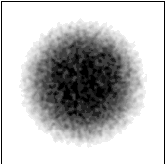
Figure 5: Simulated X-ray image of SNR assuming White & Long model for
evolution in cloudy ISM. The remnant has the same shock radius as those
illustrated in Figure 4, but cloud evaporation has increased the central
emission sufficiently to produce a center-filled morphology.
A second scenario which may produce the observed characteristics is that of a remnant entering the radiative phase of evolution. As the blast wave temperature drops below ~10^6 K, the emissivity of the blast wave shell rises dramatically. As the primary shock goes radiative there is an accompanying post-shock pressure drop, and the ``driving piston'' for the primary shock is removed; outward progress is maintained by momentum alone. X-ray emission at the shock diminishes. X-rays in the central regions persist, and represent the only observable component. Because the magnetic field strength increases along with the density as the shock goes radiative, the radio shell continues to be observable. For remnants in this evolutionary stage, there are other characteristic signatures as well. As the main shell recombines completely to neutrality, there will be an ephemeral phase of enhanced optical and UV emission. This scenario has been applied to W44 with some success (Harrus et al. 1997). Similarly, we have investigated this model for the emission from MSH 11-61A. Inconsistencies in the X-ray temperature profile remain, however, and a more detailed investigation along these lines is required.
The presence of a component of cool, dense clouds in the ISM (McKee & Cowie 1975, White & Long 1991) may also be responsible for the morphology of the center-filled remnants. In this picture, the clouds are sufficiently dense to remain relatively intact upon passage of the blast wave and are left to slowly evaporate in the hot postshock gas. The additional contribution to the central emission measure is then sufficient to produce the center-peaked profile. White & Long (1991) have developed a similarity solution for the evolution of SNRs in such a medium. They introduce two additional parameters to the Sedov model: tau, the ratio of the cloud evaporation timescale to the SNR age, and C, the ratio of ISM mass in clouds to that in the intercloud medium. For C=0 or tau --> infinity, the solution converges to the Sedov solution; for values C/tau ~3-5, a centrally peaked X-ray profile is achieved. This is illustrated in Figure 5 where we have simulated the X-ray image of a remnant with E_51 = 0.3, n0 = 0.03 cm^{-2}, C = 50, tau = 10, and d = 2 kpc. Note that while these parameters yield a remnant with the same R_s as that illustrated in Figure 4, the emission is peaked at the center and fades rapidly before the shock radius is reached. (The absorption here is N_H = 10^22 cm^{-2}, but the morphology is virtually identical for the unabsorbed case.)
We have applied this model to emission from MSH 11-61A, where we find reasonably good agreement with the observed profiles. The derived SNR parameters for this model suggest a distance of about 10 kpc for the remnant, but require extremely long timescales (C = 20-30) for the cloud evaporation.
One difficulty with the White & Long model is that propagation of a strong shock through a cloud is quite likely to result in serious deformation and fragmentation of the cloud mass (Figure 6). This will lead to an increased surface area to volume ratio, and an associated increase in the evaporation rate. In order to properly assess this model, then, a more detailed study of the cloud evaporation properties is required.
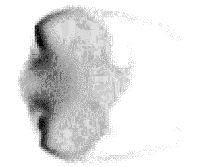
Figure 6:
Low resolution simulation of shock-cylindrical cloud interaction.
Density grayscale image shows the result 750 years
(1.4 cloud-crushing times) after the collision. The initial
cloud density contrast is 500, the shock speed is
2000 km/s, and the initial cloud radius is 0.05 pc.
The face (left edge) of the cloud shows a developing
Rayleigh-Taylor instability. (Image provided by T. Gaetz.)